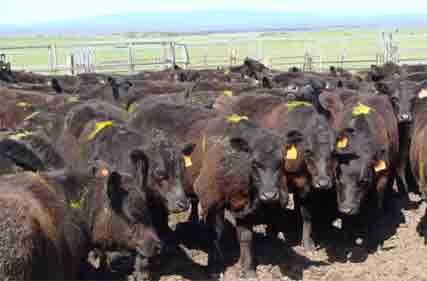 By Tim McRae
By Tim McRae
AuctionsPlus
Under the assumption that seasonal conditions in the coming year will be “closer to normal” than the run of unprecedented years since 2018, it is expected that the industry will see some traditional patterns return to the national cattle market by winter 2023.
However, it must be stated that given the extent of the “pendulum swings” for seasonal conditions over the past five years, confidence for what will happen in the year ahead is frayed.
While current forecasts are for wetter than average seasonal conditions continuing into early 2023, all eyes will be on key seasonal indicators into February and March 2023.
Regardless of the seasonal outlook, the larger herd will spur additional turnoff, with only short-term logistical disruptions (most likely due to wet season flooding through Queensland) reigniting tighter supplies and spiking prices.
An overview of the supply side of the market points to a 2023 that resembles the final three months of 2022, compared to conditions that were registered from January 2020 through to mid-2022.
The rebuilding frenzy that has gripped all cattle producing regions in south-eastern Australia for an extended period is quickly running out of steam. While a bumper wet season through the heart of the cattle industry in central and western Queensland would be well received, any rebuilding efforts are expected to be maintained at best, rather than accelerated.
From a national perspective, the heavy lifting of the herd rebuild is in the rearview mirror, with a conservative estimate seeing a breeding herd 15% larger, compared to June 2020. Into the medium term, the cattle industry is set to bring much smaller gains in the expansion of the breeding herd through to 2025-26.
From the demand side of the market, expectations for the US drought and herd liquidation to be the “great savior” and absorb additional Australian beef into late 2023 and beyond is fundamentally correct, historically accurate and the most probable outcome. However, there are still many hurdles that must be cleared before the potential is fulfilled.
The US drought needs to break, additional Australian cattle need to be processed and most importantly, US consumers need to have disposable income and jobs to purchase Australian beef.
With this being stated, history shows us that global markets tend to throw in a few surprises before the expected destination is reached – with the actions of major Australian imported beef markets, like China, Japan and Korea needing to be closely watched. One thing that will be certain is that the purchase price of cattle for processors will be lower in 2023, which will help restore some beef price competitiveness into key markets, buffering any upwards movements of the A$ and helping to offset cost-conscious consumers in a range of markets.
Records to reasonable
The price climb of the Australian cattle market in the past two years will not be replicated anytime soon. With the EYCI breaking records systematically over twenty months, through to a high of 1,191.5c/kg cwt in January 2022 – it was a great ride for the paddock orientated portion of the industry.
Beyond the farm gate, losses mounted month-in-month-out, with the “strategic frustration” that playing the long-game, with an eventual larger cattle herd and higher turnoff, would be financially beneficial. 2023 will start to see this frustration ease for the finishing and processing sectors, as prices shift from record highs to reasonable, underpinned by the significantly improved supply of cattle.
The path of the EYCI through 2022 was volatile. The EYCI started the year at record levels, fuelled by the wet summer and razor-sharp restocker and buyer demand for a very tight supply of cattle. Averaging above 1,100c/kg cwt for the first five months of the year, the winter months took a toll on the market, but for a very unexpected reason.
Concerns sparked by exotic disease coverage pushed the EYCI very quickly to 885c/kg cwt by late July. Once market fundamentals and clearer heads prevailed, the EYCI just as quickly surged back to a high of 1,092c/kg cwt in late September. Into late spring and early summer, the EYCI consistently declined on the back of constrained buyer demand and increased numbers, recently falling to a low of 855c/kg cwt. With all the volatility throughout the year, the end point of the EYCI for the year was predicted, just not in the “snakes and ladders” path it took throughout the year to get there.
From 850-900c/kg cwt in the first half of December 2022, the EYCI is forecast to be less volatile through 2023, trading primarily between 700-900c/kg cwt. After lasts years forecast, a “reasonable price” around 750c/kg cwt in early summer 2023 is most likely – assuming the normality of seasonal conditions return in autumn 2023 and demand fundamentals remain strong.
For 2023, the description of “reasonable prices” has been used, as these levels would be “reasonable” for most of the major supply links participating in the market.
